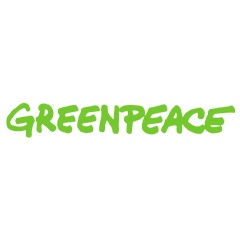Fashion at the Crossroads
A review of initiatives to slow and close the loop in the fashion industry
“Circularity” is being promoted as the latest solution to the environmental problems of our wasteful society, particularly by the fashion industry and policy makers.
However, it is mostly being tackled from the downstream up, pushing short term waste management approaches, such as the recycling of problematic plastic waste from other industries as the main solution and betting against the odds that a technological fix will provide an easy solution. Instead, there needs to be a radical transformation through slowing the flow of materials and implementing long- term waste prevention solutions which would design out the waste altogether.
Since 2011 Greenpeace has been calling on major brands to eliminate the uses and releases of harmful chemicals from their production chain, through their Detox commitments, without which the circular dream could well become a toxic recirculation nightmare. However, even this progress could be put at risk if brands fail to recognise that the overconsumption of textiles is the larger problem that must be tackled. In addition, the promotion of the circularity myth that clothes could be “infinitely recycled” may even be increasing guilt-free consumption.
This focus on circularity is illustrated by the recently released Pulse Report on the State of the Fashion Industry, which projects a future where the fashion industry continues on its current growth trajectory, with big brands taking an ever greater share of the market and implementing their ’best practices’; the industry aims to double its use of polyester by 2030 – as part of a so-called ’sustainable materials mix’ because it is claimed to be ’recyclable’. But even if it were possible to recycle all polyester textiles and close the textiles loop, are we sure it will lead to environmental benefits? And what potential is there for recycling natural fibres?
In this report, we witness a diferent reality. Recycling technologies for the one hundred percent recycling of both natural and synthetic textile waste into new fibres are at an early stage. Much of the current recycling of polyester by the textile industry does not even deal with textiles waste; instead this “open loop” recycling focusses on PET bottles, removing responsibility from the food and beverage industry for single use plastics. Initiatives by some brands for recycling plastics waste reclaimed from the sea have more impact on their public relations profiles than on the huge problem of plastics pollution of the oceans. The industry is mostly turning a blind eye to the inherent problems of polyester, in particular its reliance on fossil fuels and its contribution to the problem of microplastic fibres in the aquatic environment.
Download the Greenpeace Germany report:
( Press Release Image: https://photos.webwire.com/prmedia/7/213738/213738-1.png )
WebWireID213738
This news content was configured by WebWire editorial staff. Linking is permitted.
News Release Distribution and Press Release Distribution Services Provided by WebWire.
